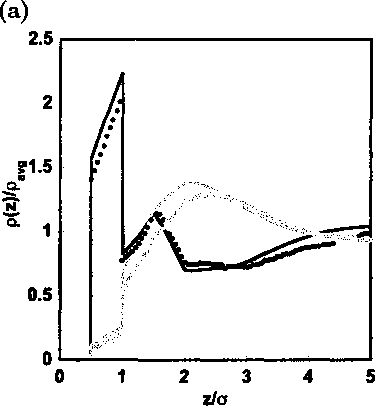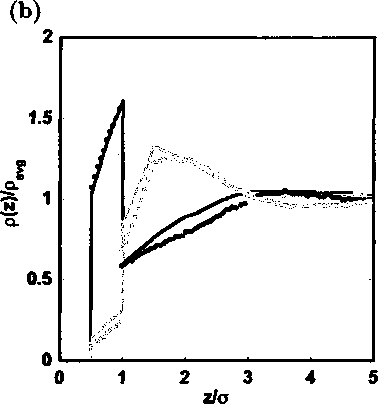
Figure 4.6: Comparison of the density profiles of A segments (black) and B segments
(gray) from modified iSAFT (curves) and molecular simulation (symbols: A segments (∙)
and B segments (■)) for the copolymer (a) AAAABBBB, and (b) ABBBBA, in a selective
slit pore. The reduced energy parameter is defined as e* = βe. The reduced energies are
given by e^A = 1.0, = —1.0, caa = 1.0, eββ = 0.5 and eAB = —0.5 and the average
packing fraction of the copolymer in the pore is η = 0.1. The simulation results are from
Cao and Wu [112].

“A” segments is higher near the surface. There is a discontinuity at z∣σ = 1 due to
the termination of the wall potential. Beyond z∣σ = 4, the densities reach a uniform
value. Differences between the theory and simulation results are due in part to the
inconsistencies in the reported simulation results of Cao and Wu [112]. The authors
report that the densities are scaled with the average densities in the simulation cell,
but the average of the scaled density is not 1.0 and the raw densities are no longer
available [125]. Therefore, the true state point of the simulation is unclear.
Figure 4.6b compares the density profiles from theory and simulation for segments
of type “A” and “B” of a block copolymer “ABBBBA” confined in a slit-like pore
105
More intriguing information
1. Agricultural Policy as a Social Engineering Tool2. Tourism in Rural Areas and Regional Development Planning
3. Innovation Trajectories in Honduras’ Coffee Value Chain. Public and Private Influence on the Use of New Knowledge and Technology among Coffee Growers
4. The effect of classroom diversity on tolerance and participation in England, Sweden and Germany
5. Evidence on the Determinants of Foreign Direct Investment: The Case of Three European Regions
6. Monopolistic Pricing in the Banking Industry: a Dynamic Model
7. THE CO-EVOLUTION OF MATTER AND CONSCIOUSNESS1
8. The name is absent
9. Activation of s28-dependent transcription in Escherichia coli by the cyclic AMP receptor protein requires an unusual promoter organization
10. Campanile Orchestra